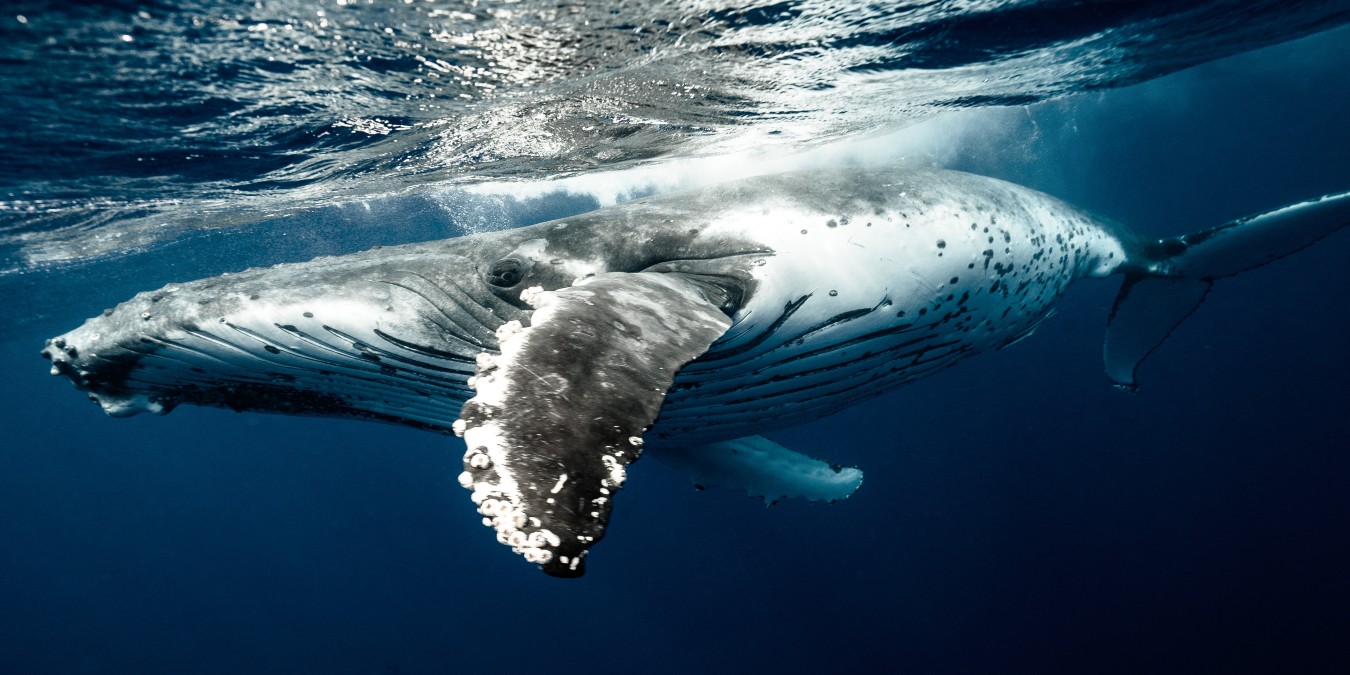A life at sea can be challenging, even for the largest animals. Unlike fish, whales breathe air and must be able to swim to the surface, or they risk drowning. So, how do whales sleep? Let’s find out.
Voluntary Breaths
Whales are conscious breathers, meaning they actively seek air and are alert to their surroundings at all times. A whale’s blowhole must be above the surface of the water in order for them to take a breath.
In order for voluntary breathing to function, at least part of the brain must be conscious and alert. The opposite is true for humans and other land mammals, whose breathing is involuntary.
Switching Off Part of Brain
Many species of whale and dolphin have a unique ability; to switch off one hemisphere of their brain during sleep. This is known as unihemispheric sleep and during this time, whales can sleep with one eye open. The eye controlled by the awake side of the brain remains open and the eye controlled by the resting side is closed.
Unihemispheric sleep ensures that part of the brain is always active. After an hour or so, the process is reversed and the other hemisphere of the brain is rested.
This ability allows whales and dolphins to rest and sleep, but also to remain alert and consciously swim to the surface to breathe. Without this skill, they would likely drown during sleep or be forced to sleep for short periods floating at the surface.
Also Read: What Do Whales Eat?
Breath Holds in Whales
Larger species, such as sperm and humpback whales, have much larger lungs and therefore a larger oxygen capacity. These whales can take a big breath and hold it for longer, allowing them to sleep without the risk of drowning.
On average, larger whale species can hold their breathe for 80-90 minutes, giving them plenty of time to sleep before needing to surface for air.
These species also have a higher tolerance for carbon dioxide than smaller species such as orca. This increases the period they can go without needing to take another breath.
Lack of Sleep for Some Whales
Some whales do not sleep at all the first month after calving. Orca calves spend their first month of life constantly swimming and nursing. They cannot swim on their own and need their mother to create a slipstream through the water.
This means that the mother also cannot sleep, as she needs to be with her calf constantly. She also needs to keep moving to provide the slipstream required to ensure her calf does not drown.
Life out at sea can be harsh and demanding, but whales are clever creatures built to survive their environment with apparent ease.
You Might Also Like to Read: Where Do Mosquitoes Go in the Winter?

